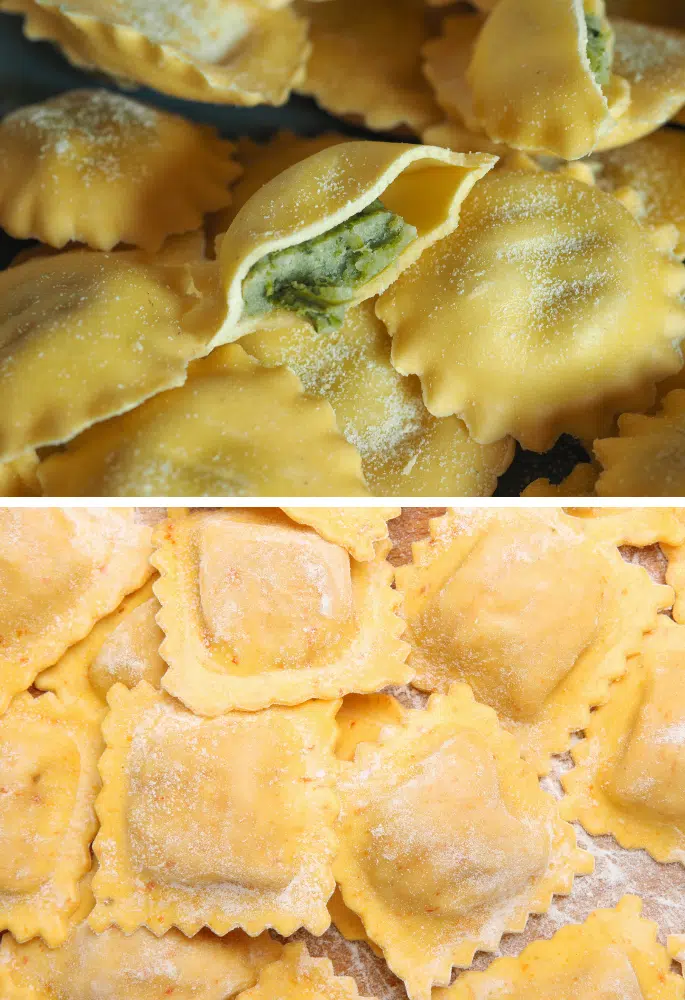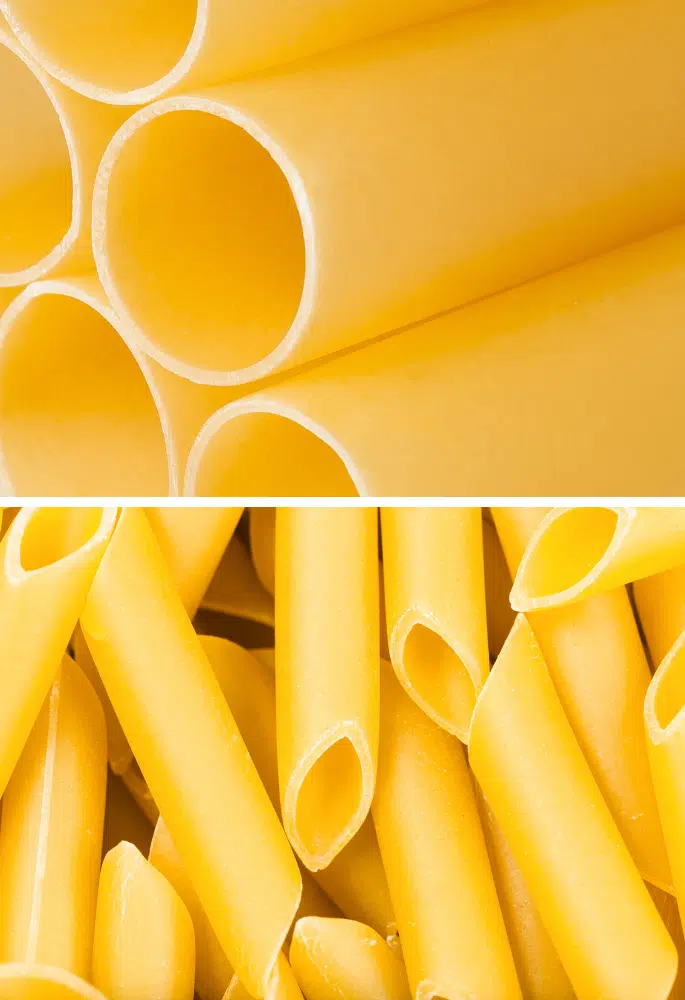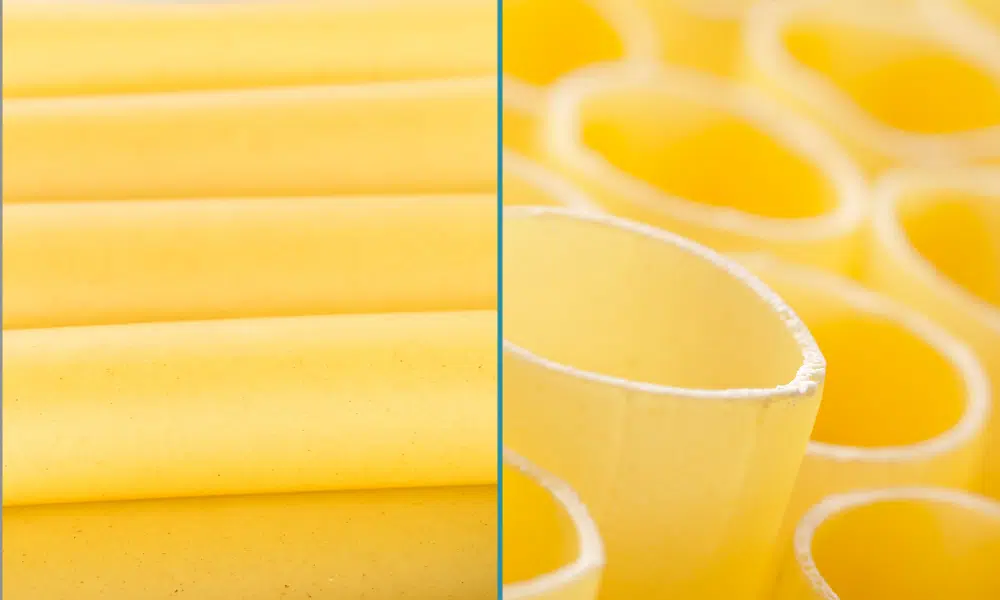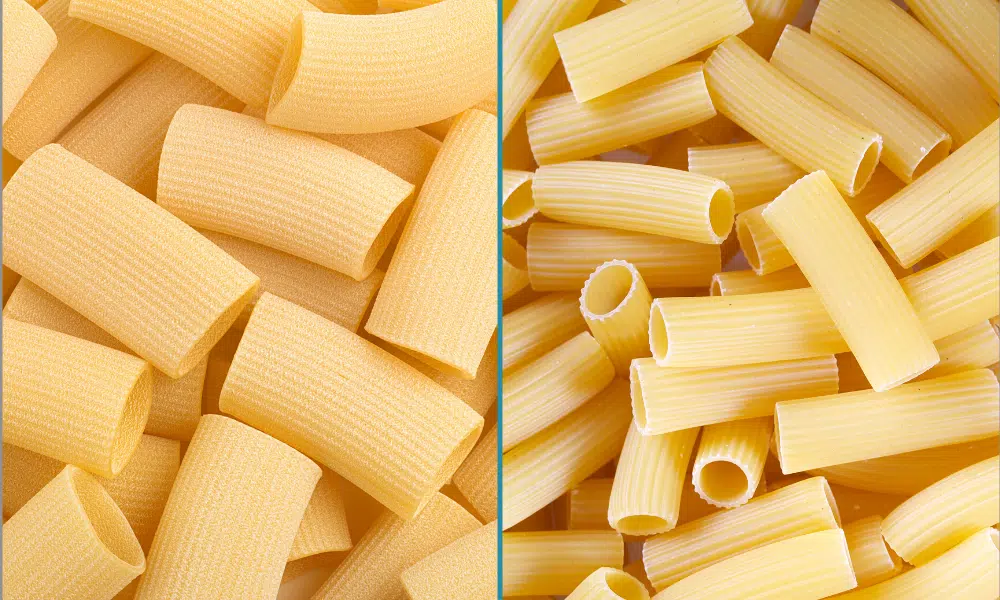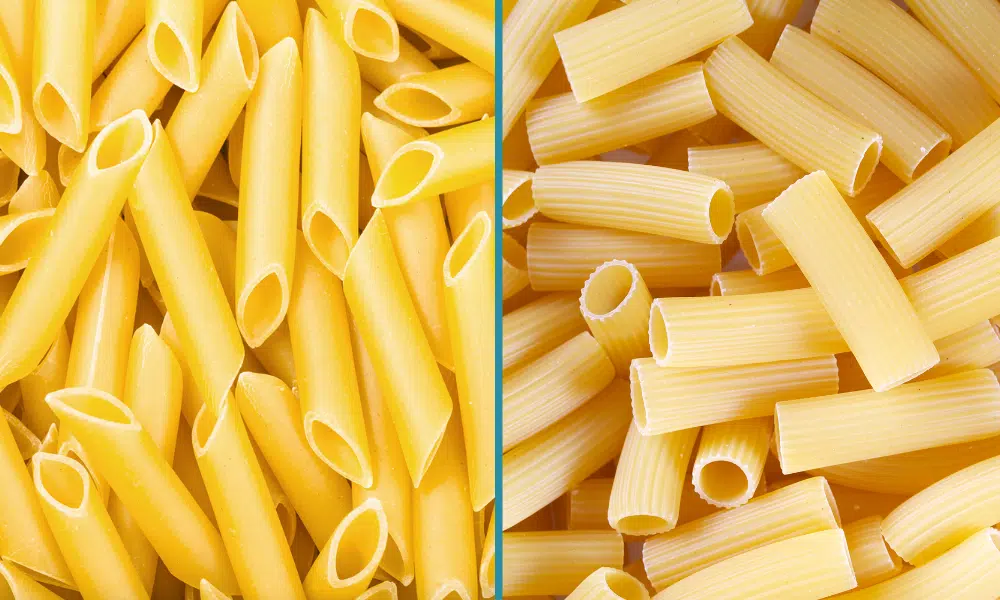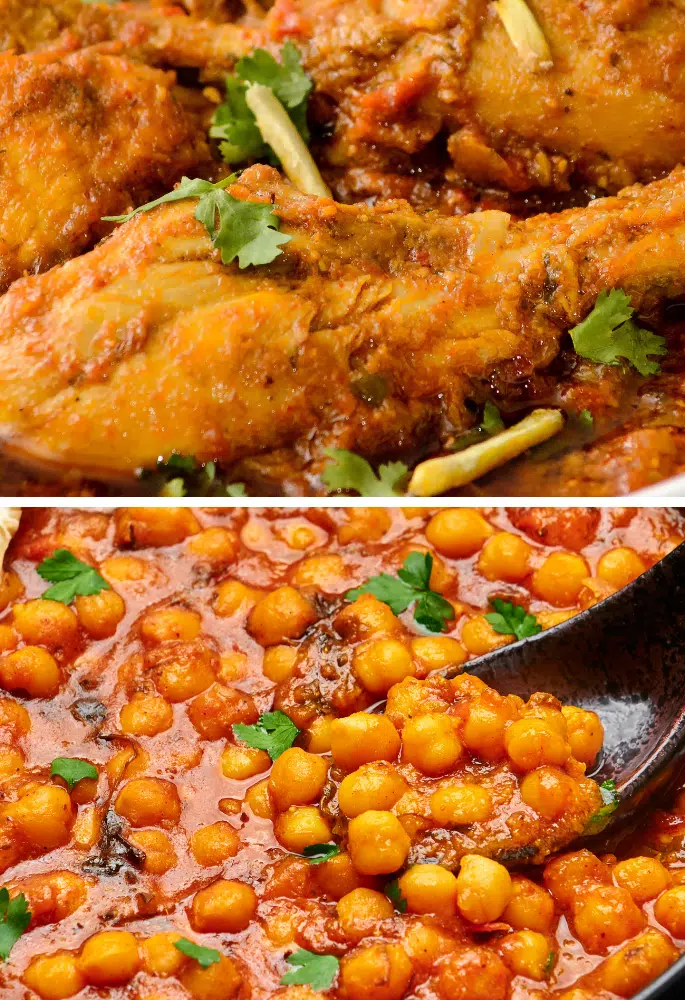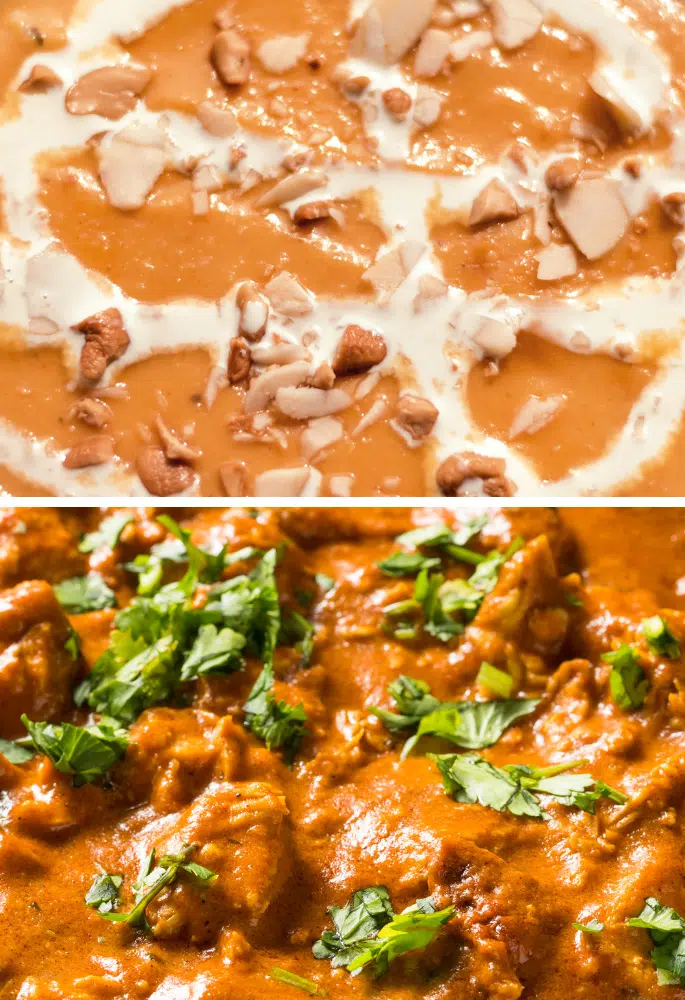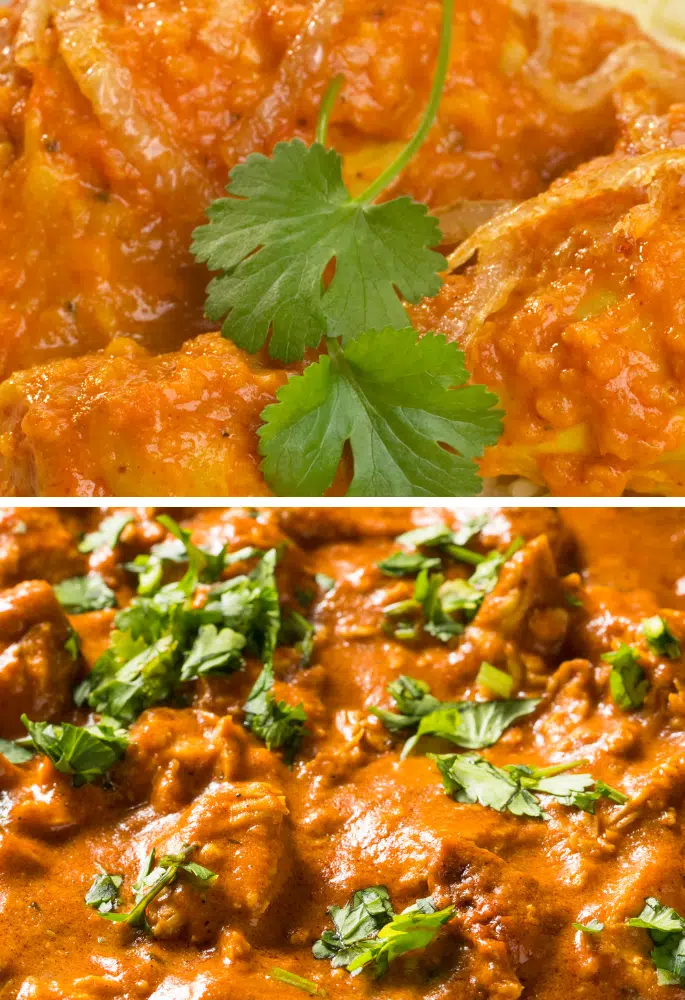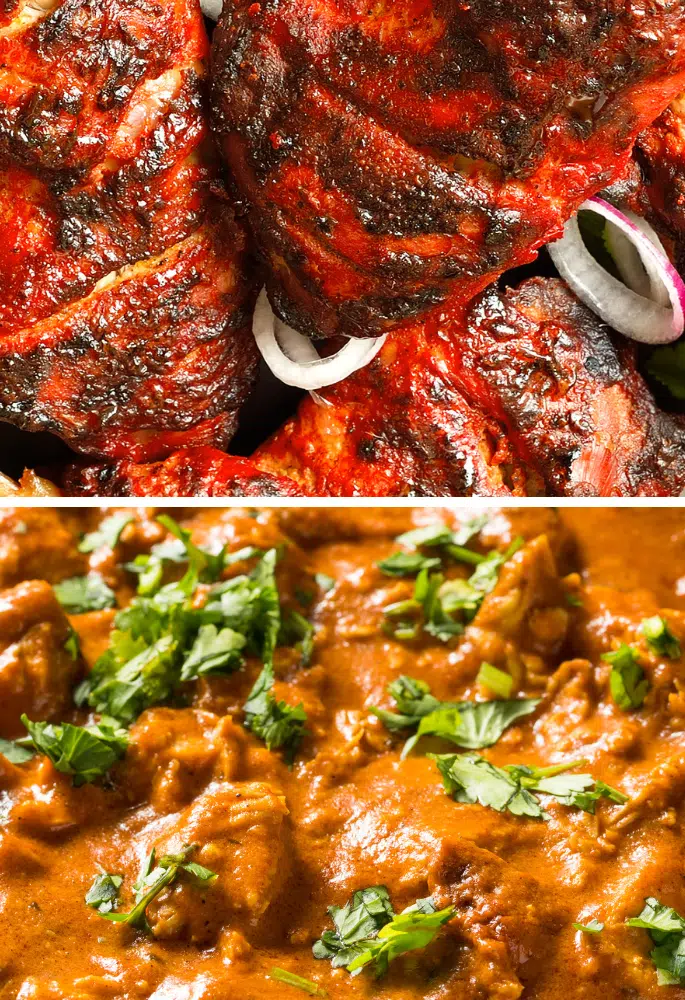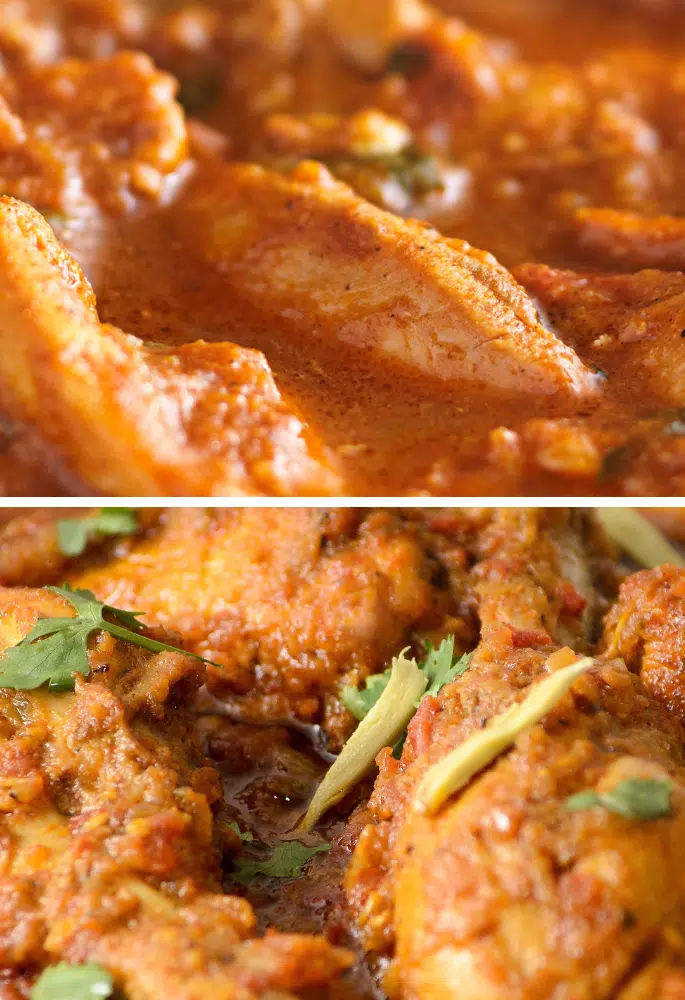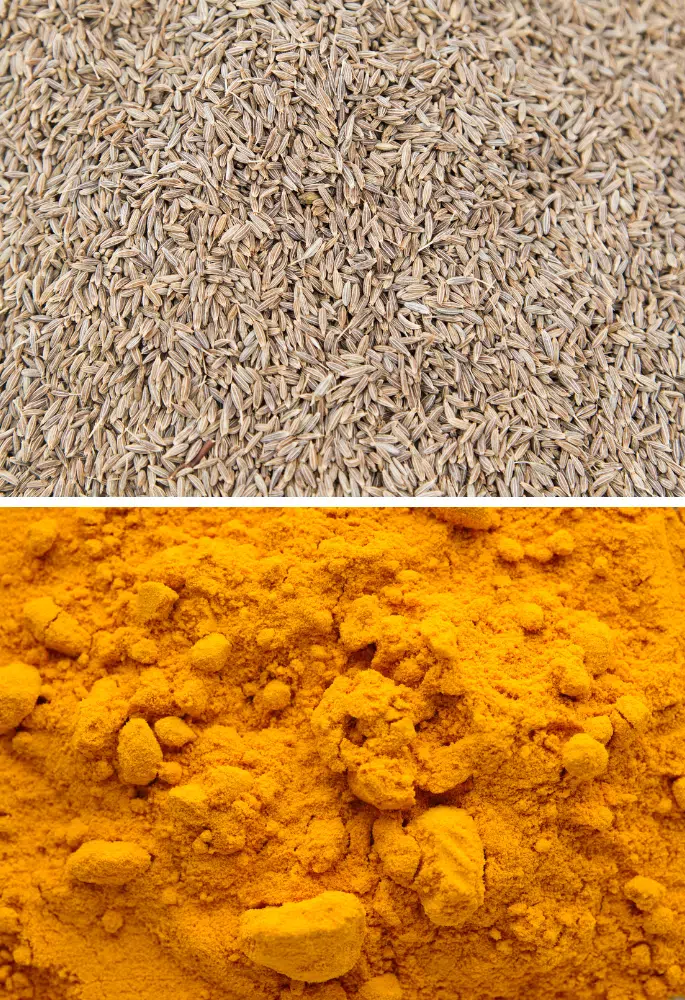As you probably know, pasta comes in countless shapes and sizes. Today, we’re going to explore two such varieties: Rigatoni and Rotini. Both are beloved for their distinctive shapes and ability to hold sauces so what makes them different?
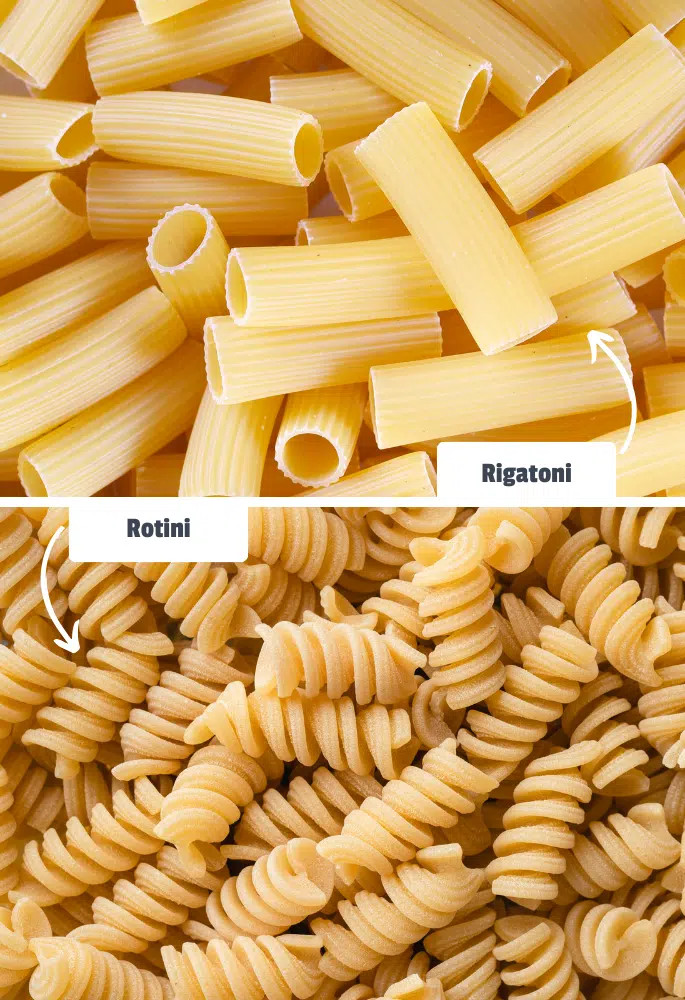
Rigatoni, a large tube-shaped pasta, is known for its ridges and straight-cut ends, ideal for hearty, chunky sauces. Rotini, with its spiral shape, is excellent for trapping lighter, more delicate sauces.
What is Rigatoni?
Rigatoni is a type of pasta that originated in Italy.
It is characterised by its large, tube-like shape with ridges on the outside and straight-cut ends. These ridges and the wide hollows are perfect for holding onto thicker, meatier sauces.
Rigatoni is typically made from durum wheat semolina and is favoured in baked pasta dishes like pasta al forno, or with robust sauces such as ragù.
What is Rotini?
Rotini, also hailing from Italy, is a spiral-shaped pasta. Its tightly wound spirals are excellent at trapping and holding onto sauces, making it a go-to choice for lighter, oil-based, or vegetable-based sauces.
Rotini pasta is also made from durum wheat semolina and is often used in pasta salads, as its shape holds dressing well and intertwines with other ingredients effortlessly.
Fusilli and rotini are both spiral-shaped pasta, but with subtle differences. Fusilli is typically longer, with tighter, more defined spirals, and is often made by twisting spaghetti-length strands around a rod. Conversely, Rotini is shorter with wider and less pronounced spirals, often resembling corkscrews.
Similarities Between Rigatoni and Rotini
Although they look completely different, Rigatoni and Rotini do share some surprising similarities you might not be aware of:
- Durum Wheat Semolina: Both Rigatoni and Rotini are made from durum wheat semolina, giving them a firm texture and a golden-yellow hue.
- Italian Origin: Each pasta type has its roots in Italian culinary tradition, showcasing the diversity of Italian pasta shapes.
- Versatility: Both Rigatoni and Rotini are versatile and can be used in various dishes, from baked pastas to salads.
- Sauce Compatibility: Each is designed to pair well with specific types of sauces, enhancing the overall flavour and texture of the dish.
Differences Between Rigatoni and Rotini
Of course, the list of differences is fairly extensive.
- Shape: Rigatoni is a large, tube-shaped pasta with ridges and straight ends, whereas Rotini is characterised by its tight spirals.
- Sauce Pairing: Rigatoni’s structure makes it ideal for thick, chunky sauces, while Rotini’s spirals are better suited for lighter, more delicate sauces.
- Dish Types: Rigatoni is often used in baked pasta dishes with hearty sauces. In contrast, Rotini is popular in pasta salads and with oil-based sauces.
- Texture in Dishes: The ridges in Rigatoni provide a more robust texture, especially after baking, while Rotini offers a more delicate, intertwined texture in dishes.
- Sauce Retention: Rigatoni’s large hollows are great for holding onto chunky ingredients, whereas Rotini’s spirals effectively capture and retain both light and creamy sauces.
Yes, you can substitute Rigatoni for Rotini in most recipes. While Rigatoni is tube-shaped with ridges and typically larger than the spiral-shaped Rotini, it works well in capturing and holding onto sauces. This substitution might slightly alter the texture and appearance of the dish.
Rigatoni vs Rotini: Which Wins?
If you had to limit yourself to just one of these types of pasta for the rest of your life, which are you voting for?
Do You Prefer Rigatoni or Rotini?
Hailing from Liverpool, Oliver is an adventurous chef with a penchant for exploring diverse cuisines and novel ingredients. Ollie, combining his love for local British flavours with global influences, brings innovation and charm to home cooking.


